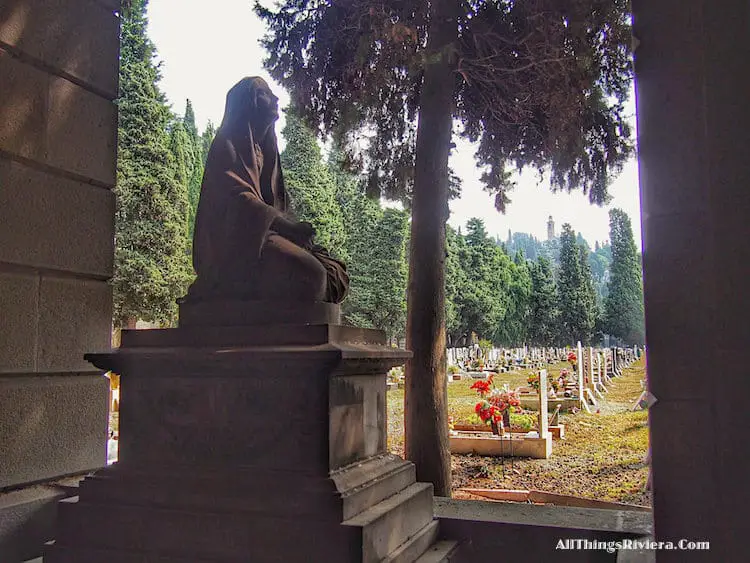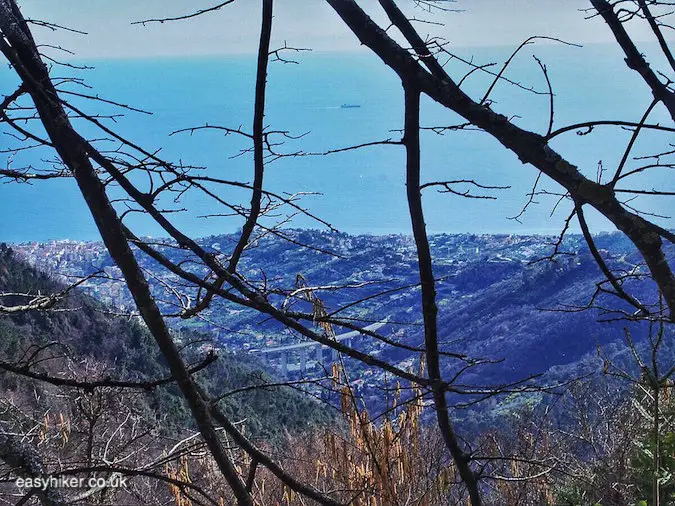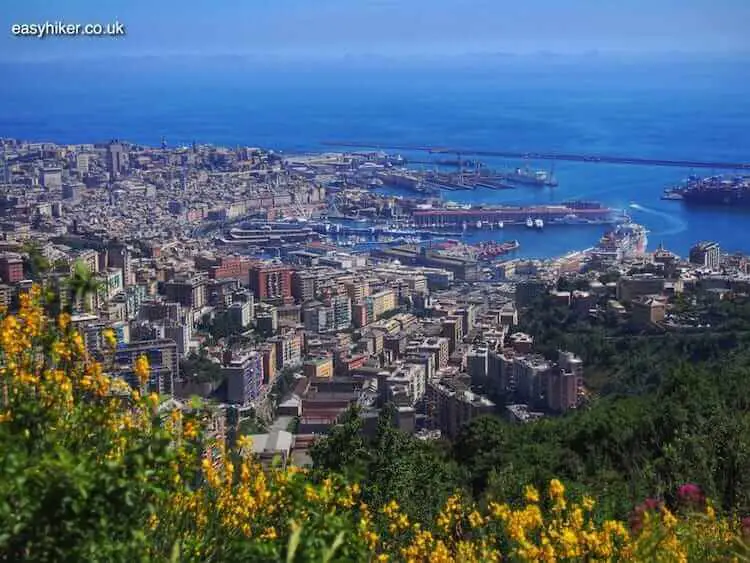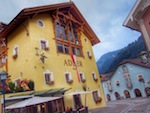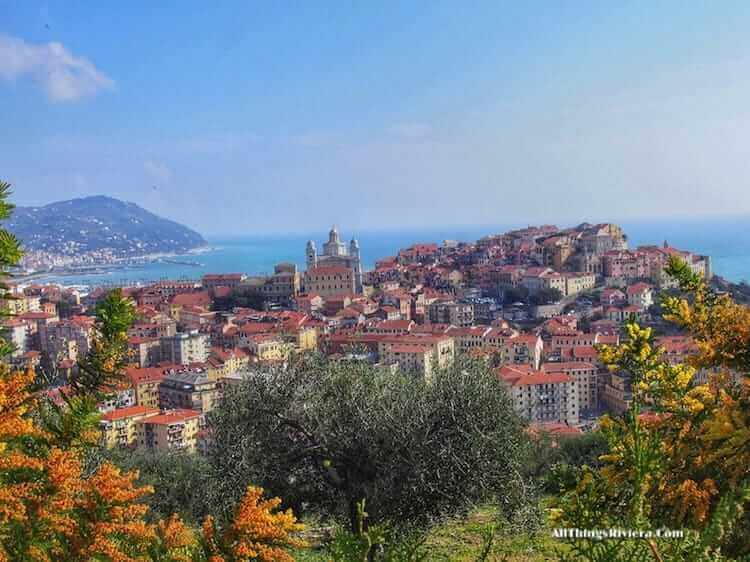There are three good reasons to visit the Cimitero Monumentale di Staglieno in Genoa, one of Italy’s (and Europe’s) most famous and important “cities of the dead”. (Hemingway called the Staglieno “one of the wonders of the world”, and writers as different as Friedrich Nietzsche and Mark Twain were among its admirers.)
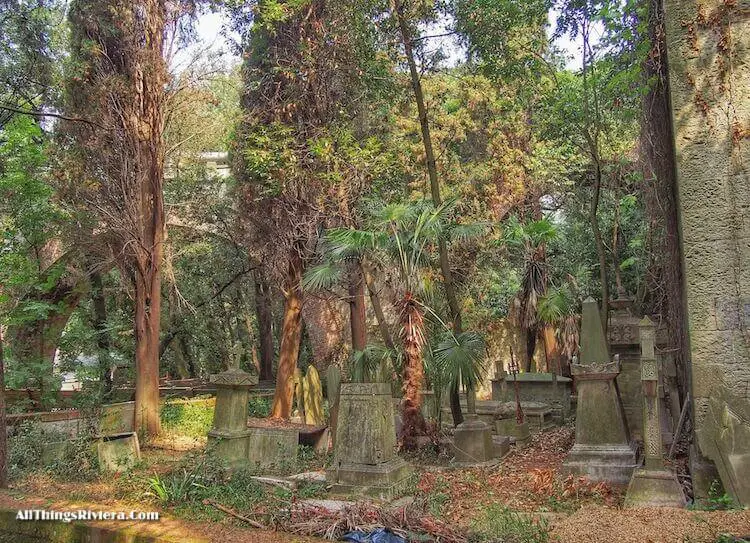
First, architectural history. Archaeologists argue to what extent the (often surprisingly well-preserved) ancient cemeteries may have mirrored the structure of the towns for the living which once surrounded them (when no trace of these towns themselves has remained).
Less attention is focused on modern cemeteries, which is a pity, because they, too, reflect basic truths about the societies that have brought them forth.
Read also: Death is an Italian Opera
Today’s cemeteries, for example, are relatively egalitarian: some graves may be bigger and more ornate than others but all are contained within the same, grid-like system.
Most cemeteries from the period immediately preceding ours, conversely – those that were laid out in the late 19th and early 20th century – follow radically different structural principles.
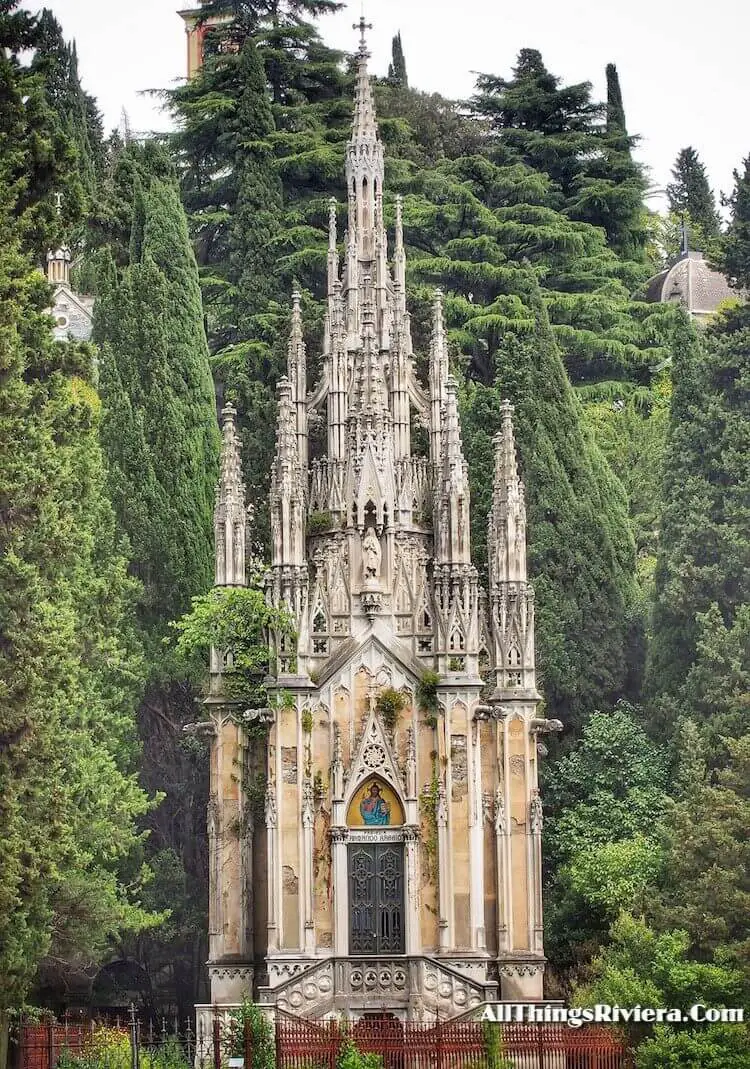
The rigidity of the class system is the first thing to note when you visit the Staglieno, which was established in 1851 in the north of Genoa and eventually became part museum, part municipal park.
The lower orders are housed in the campi – grid-like “fields” – and the professional middle classes in the museal galleries, while the aristocracy (as well as the haute bourgeoisie) reside in the chapels and palazzi that scatter the park-like and hilly hinterland.
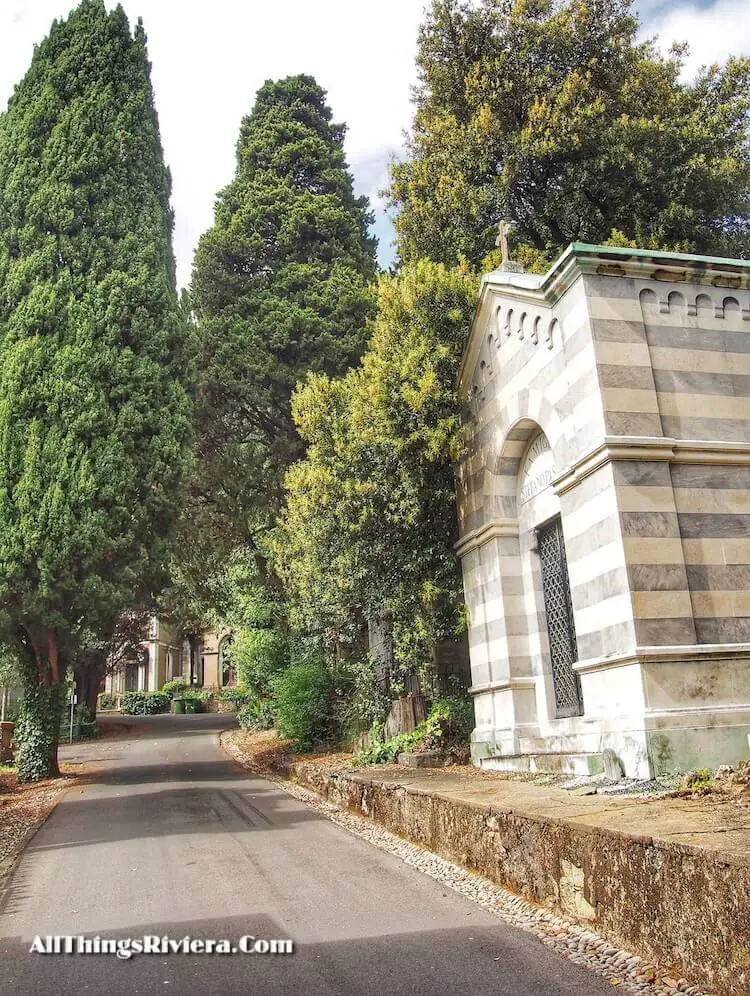
Some degree of social mobility after death, meanwhile, was clearly permitted: one of the Staglieno’s most famous graves is the final resting place of Caterina Campodonico, a peanut street vendor who scrimped and saved her entire life so she could afford a funerary monument of her own.
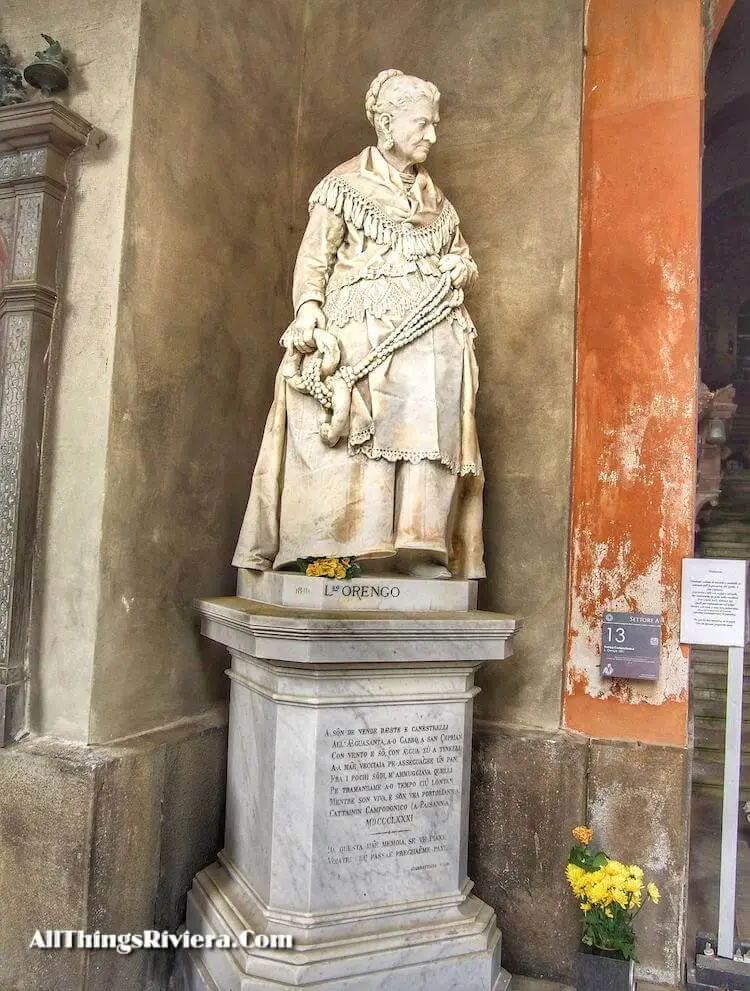
Secondly, you can treat the cemetery like a big museum. There are plenty of statues on view, and although their artistic value is mixed, these galleries are interesting in the same way that the lower floors of the Musee d’Orsay are interesting, giving us an authentic flavour of what was once thought as an appropriate pose to strike, in death as well as in life.
Based on the evidence, the “heroic bourgeois” must have clearly been the ideal in the Victorian or Gilded Age.

(I wonder which one of the currently fashionable poses that “persons of public interest” so carefully adopt – posing for PR shots rather than for family graves – will be the ones to raise ironic eyebrows 150 years from now: will it be the aggressively confident entrepreneur? the “intersectional” warrior against micro-aggressions and cultural privilege?)
Meanwhile, a little hill of its own has been reserved for the most heroic bourgeois of them all: Giuseppe Mazzini (a native Genovese, 1805-1872) is one of Italy’s three national heroes, the austere intellectual to complement the impulsive Garibaldi and the wily Cavour, the Sonny and Michael Corleone respectively of the Risorgimento.
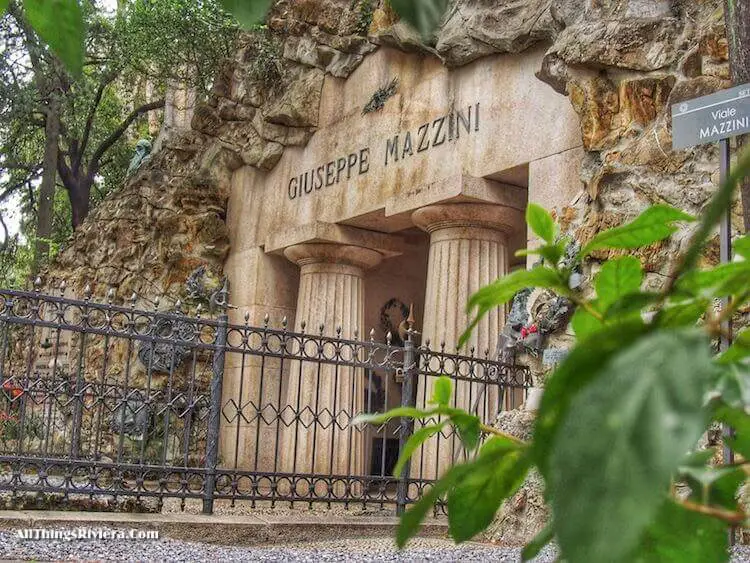
Thirdly, the Staglieno (one of the Wonders of the World?) is a great place for a meditative walk through pretty and carefully landscaped scenery. The aqueduct serves as a good line of orientation: behind its high arches, the park-like section begins.
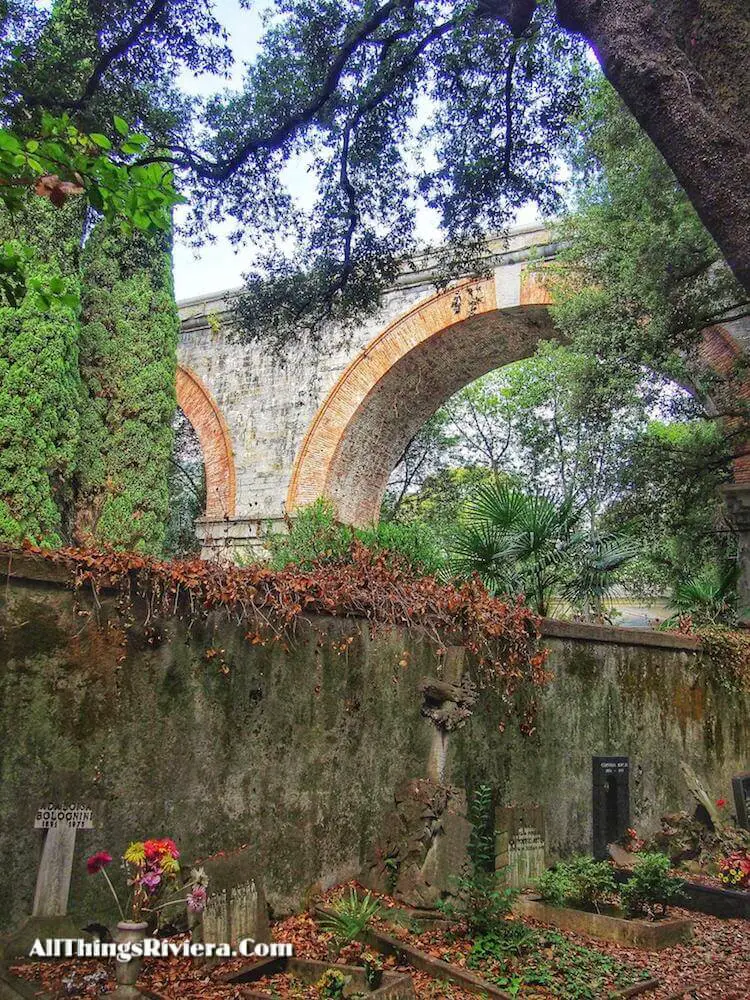
It is probably best to explore the Staglieno following your instincts and personal intuition, but if you are in Genoa for only one day and have other things on your to-view-list, you can easily complete the following introductory tour in less than two hours.
Take bus no. 34, which leaves from the Columbus statue right in front of Genoa’s central train station (Piazza Principe). Enter the cemetery (said to be One of the Wonders of the World) through the West Entrance (the only one currently open) and turn immediately left into the gallery.
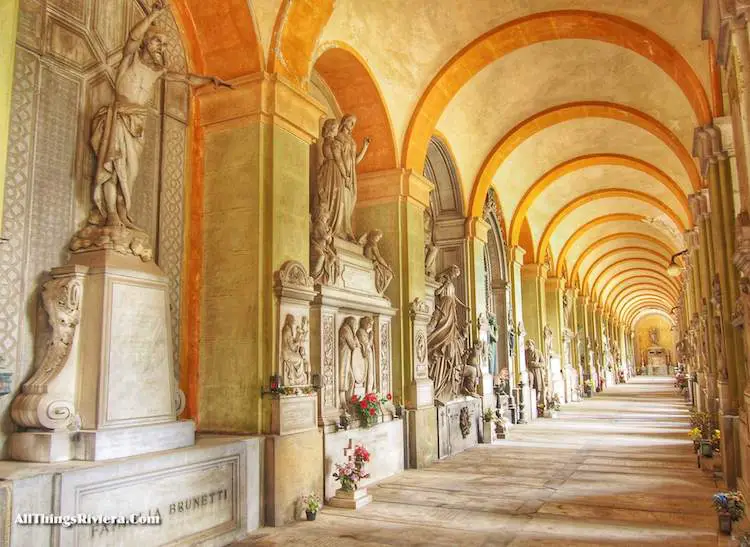
When this gallery takes a 90 degree turn to the right (a few meters in that direction, you can find the Campodonico grave), step outside towards the left and make your way towards the Protestant section of the cemetery (underneath the aqueduct) for the Anglican chapel …
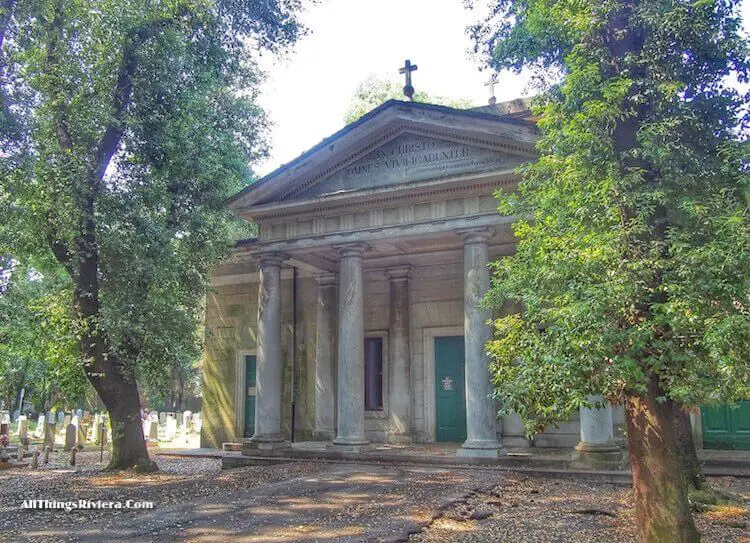
… and the final resting place of Mrs. Oscar Wilde.
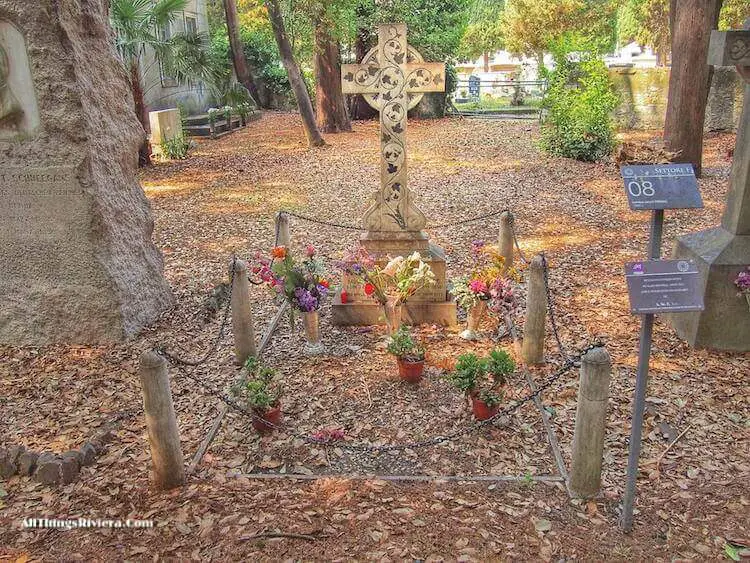
You can continue past the Anglican chapel (northwards) for a longer walk, but we recommend to return and take the stairway on your left just behind the aqueduct for the Commonwealth War Graves, laid out in six terraces for British soldiers who lost their lives here in the two World Wars, but also in battles reaching as far back as the Siege of Genoa in 1800. (They had originally been buried in another place and were transferred here later.)
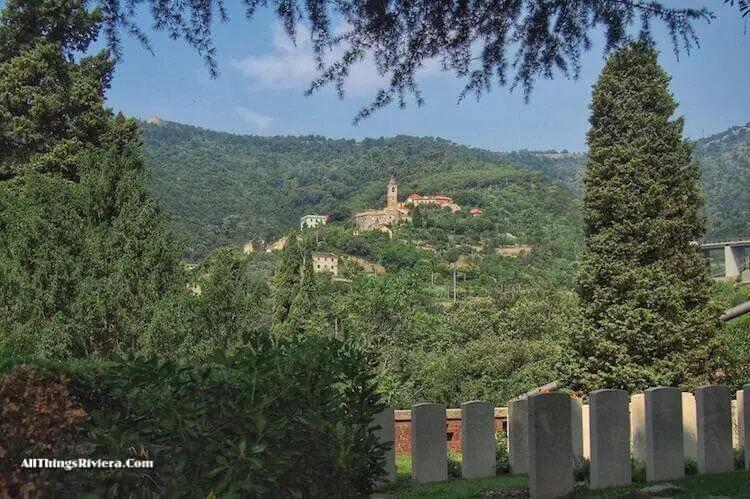
At the very top of the stairway, turn right into Viale Brian to explore the E section , the cemetery’s hilly and “aristocratic” hinterland. Viale Brian will merge into Viale Mosco and take you around (past the stairs to the Mazzini Monument) the Campi Radiali in the extreme north to the Piazzale San Olcese. Use the little stairways to descend back to the main section, …
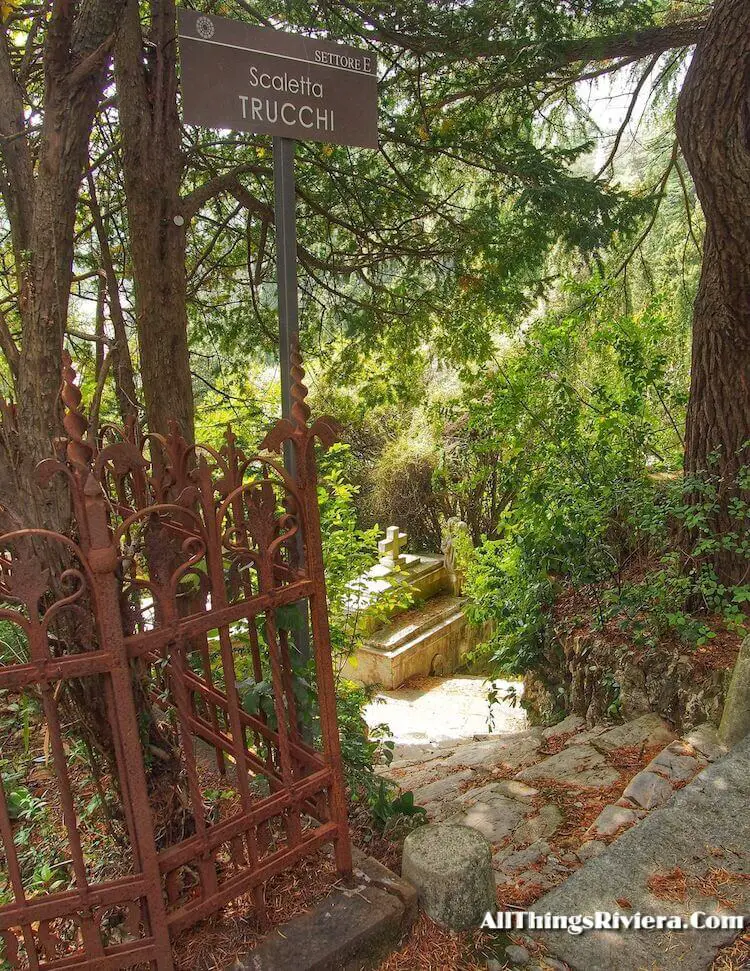
…turning right into Viale Superiore Pontasso for a close look at the Pantheon, the Staglieno’s central building, and eventually returning to the exit.
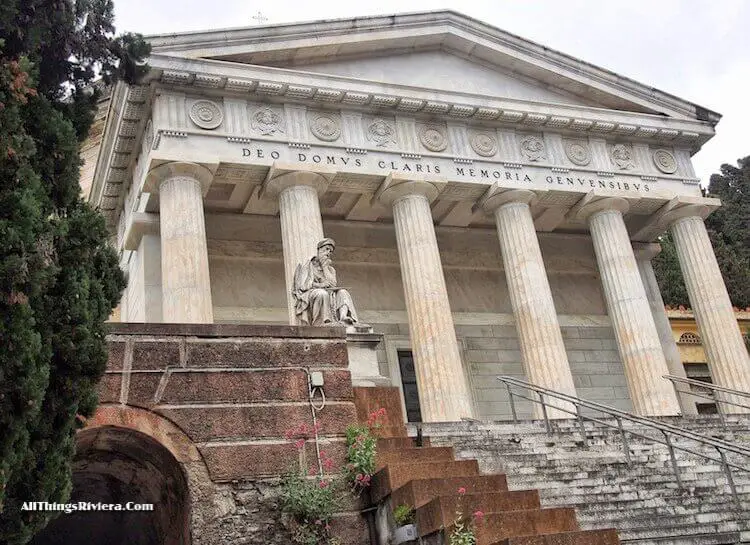
For more information, go here for the detailed map of the cemetery as a free PDF guide (in English) with many ideas for short walks inside the Staglieno.
